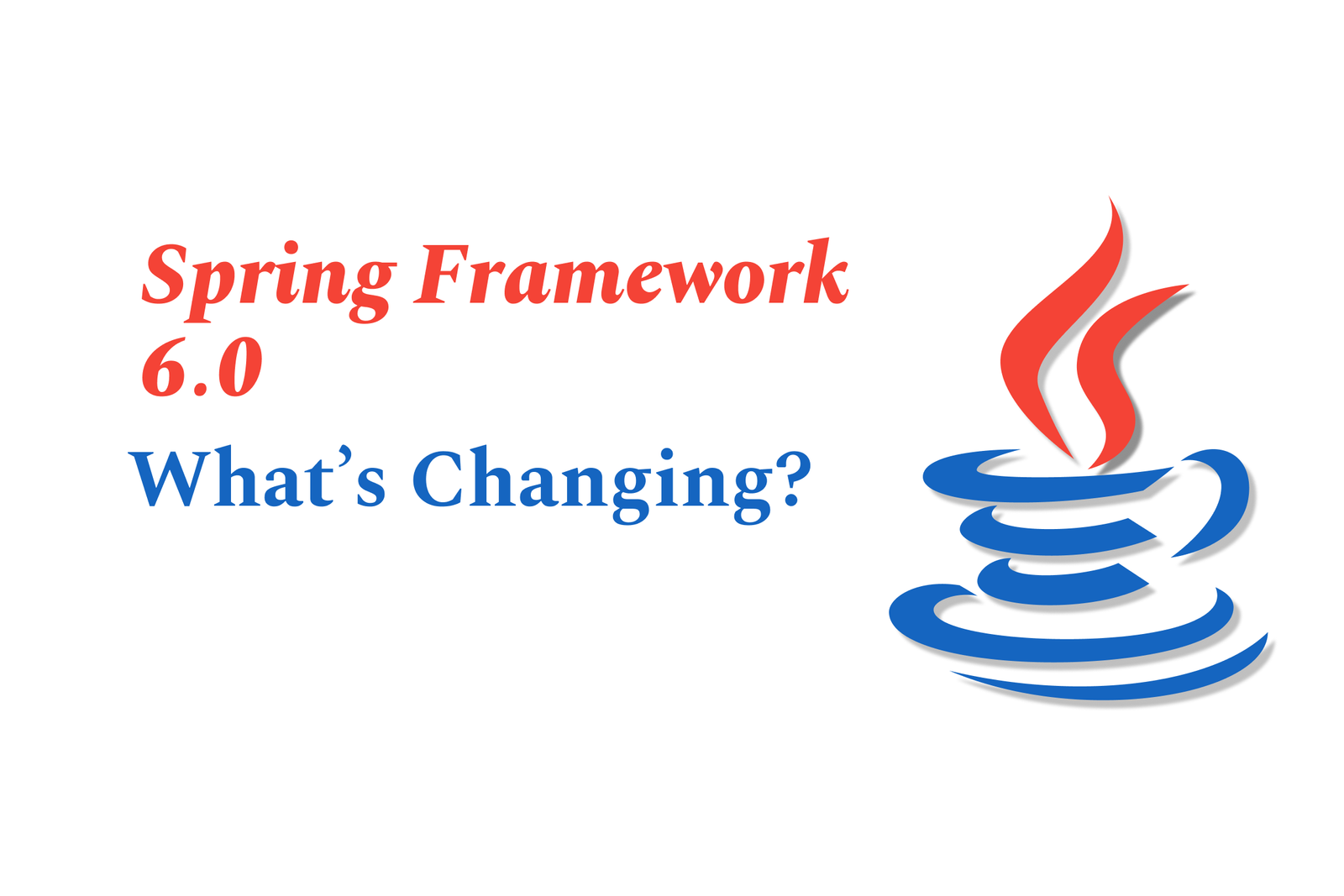Spring Framework 6.0: What?S Changing?
Spring Framework 6.0 modernizes the platform by requiring Java 17+, adopting Jakarta EE 9+ namespaces, and enhancing support for AOT compilation and JVM innovations like virtual threads. It aligns with Spring Boot 3, improving performance, observability, and cloud-native readiness.
Spring Framework 6.0: What’s Changing?
1 ) Java Baseline Upgrade
Spring Framework 6.0 requires Java 17 or higher, marking a significant upgrade from previous versions.
This change aligns with the latest Long Term Support (LTS) Java releases and enables the use of modern Java features and APIs.
2 ) Migration to Jakarta EE 9+
The framework fully adopts the Jakarta EE 9+ API, moving from the old `javax` namespace to the new `jakarta` namespace.
This affects core specifications such as Servlet, JPA, and Bean Validation.
Developers will need to refactor their codebase to replace references like `javax.servlet` with `jakarta.servlet`.
3 ) Compatibility and Upgrading
Spring Framework 6.0 is designed as a straightforward upgrade from Spring 5.3.x but requires attention to namespace changes and Java version.
Minimum requirements also include updated web servers like Tomcat 10.1 or Jetty 11 compatible with Jakarta EE 9.
Extended maintenance will continue for Spring 5.3 and Spring Boot 2.x for those remaining on older Java versions, easing migration pressure.
4 ) Ahead of Time (AOT) Processing Support
Introduces a foundation for AOT transformations, improving startup performance.
Enables first class support for GraalVM native images in conjunction with Spring Boot 3.
Positions Spring to embrace static compilation and AOT optimizations for native cloud deployments.
5 ) Preview Features for Modern JVM Innovations
Support for Project Loom's virtual threads is previewed, promising lightweight concurrency improvements.
Integration with Project CRaC’s checkpoint restore mechanism aimed at faster JVM startup times.
These features are experimental but indicate a future direction focusing on enhanced JVM performance and scalability.
6 ) Updated APIs and Observability
Adds a new HTTP interface client for declarative REST communication.
Supports RFC 7807 problem details for standardized error handling.
Includes Micrometer based observability support for HTTP clients, enhancing metrics and monitoring capabilities.
7 ) Spring Boot 3 Integration
Spring Framework 6.0 release is closely tied to Spring Boot 3.0, which manages corresponding dependencies and simplifies adoption.
Spring Boot 3 requires Java 17+, leveraging the same foundational platform enhancements.
8 ) Development and Community Resources
Developers are encouraged to test early milestone releases available from Spring repositories.
Official upgrade guides and the Spring Boot 3.0 roadmap are actively maintained on GitHub to help ease transition.
Training and certification options are also available for developers needing upskilling.
Summary:
Spring Framework 6.0 represents a major stepping stone, modernizing the core Spring ecosystem with Java 17+ support, migration to Jakarta EE 9+ namespaces, and preparation for cutting edge JVM features like AOT compilation and virtual threads. It ensures Spring remains a robust and performant framework for contemporary cloud native and enterprise Java applications while providing a clear upgrade path supported by Spring Boot 3.0 and updated server infrastructure.
https://justacademy.in/news-detail/flutter-ai-packages-gaining-traction
https://justacademy.in/news-detail/react-native-performance-hacks-revealed-in-latest-update
https://justacademy.in/news-detail/ui/ux-trends-for-ios-apps-in-2025
https://justacademy.in/news-detail/why-java-is-still-the-#1-language-for-enterprise-apps
https://justacademy.in/news-detail/xcode-16.3-released:-new-tools-and-features-for-ios-devs
Related Posts
In 2025, top Angular libraries offer modern, feature-rich components and tools for building dynamic web apps. From powerful data grids to low-code platforms like UI Bakery, these libraries enhance development speed, UI design, and scalability, making them essential for Angular developers.
Migrating from AngularJS to Angular 17 involves gradually upgrading your app by running both frameworks together using tools like ngUpgrade, rewriting components in TypeScript, and adopting Angular’s modern architecture to enhance performance, maintainability, and long-term support.
Angular state management tools help organize and handle app data efficiently, improving scalability and maintainability. Popular options include NgRx for robust, RxJS-based patterns, and newer Signal Store solutions that offer simpler, reactive approaches integrated tightly with Angular’s latest features.
RxJS in Angular empowers developers to manage asynchronous data streams with powerful operators like `forkJoin`, `combineLatest`, and `zip`. Mastering these key operators in 2025 is essential for building efficient, reactive applications that handle complex event sequences seamlessly.
Angular performance optimization in 2025 focuses on improving app speed and responsiveness by using techniques like OnPush change detection, lazy loading, efficient data caching, and AOT compilation. These practices reduce load times, enhance user experience, and ensure scalable, fast Angular applications.
In 2025, Angular remains preferred for large-scale, enterprise apps with its robust, all-in-one framework, while Vue attracts developers seeking simplicity and fast development for smaller projects. Both frameworks excel, with choice driven by project needs and team expertise.
Angular Signals are a new reactive primitive in Angular 16 that enable fine-grained, efficient change detection by automatically tracking dependencies and updating only affected parts of the UI. They simplify state management and boost app performance, revolutionizing Angular's reactivity model.
Angular interview questions to prepare in 2025 focus on core concepts like components, directives, data binding, routing, and dependency injection, along with TypeScript mastery and latest Angular features to ensure strong practical knowledge for building scalable, efficient web applications.
AngularJS reached its official end of support in January 2022, meaning no further updates or security patches. To ensure app security and performance, developers should consider migrating to modern Angular versions or seek third-party long-term support options if immediate migration isn’t possible.
The Angular Roadmap 2025 highlights upcoming features focused on improving developer experience and performance, including zoneless Angular, Signals integration, enhanced Forms, async data handling, improved HMR, and expanded Angular Material/CDK enhancements, driving modern, efficient web app development.










